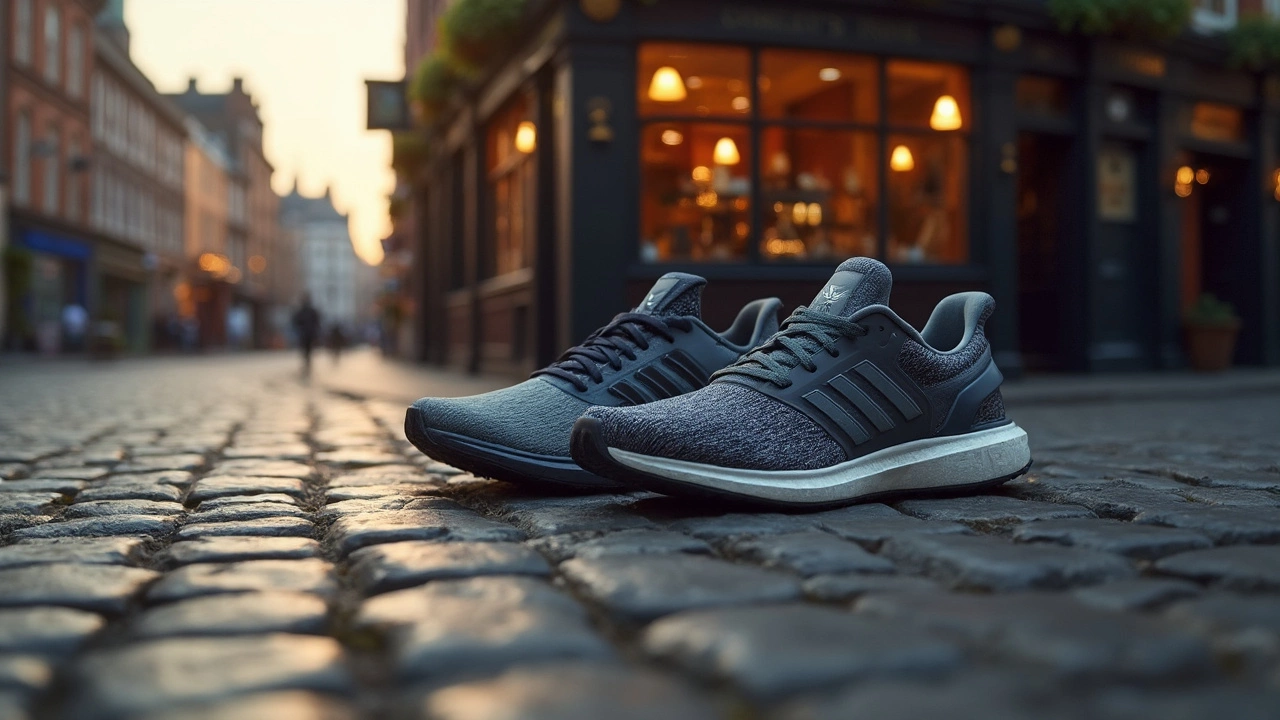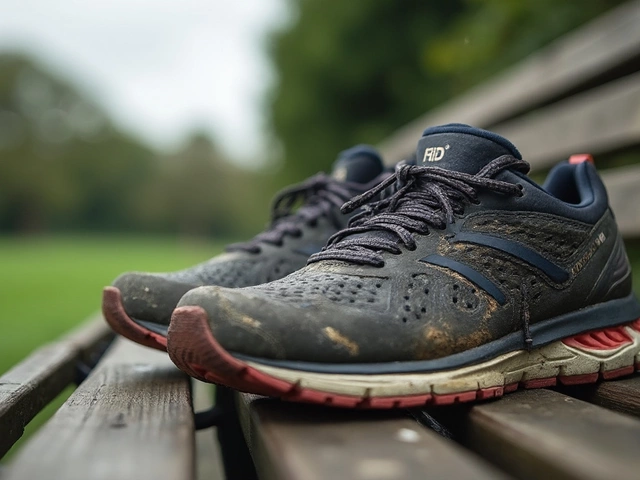Do Adidas Run Different Than Nike? Tips for Choosing the Right Fit

So you're in the market for some new kicks and can't decide between Adidas and Nike, huh? It's like choosing between pizza toppings; both are great but bring something a bit different to the table. If you're wondering whether these big brands run differently, you're in for a treat.
First off, let's talk fit and sizing. Nike tends to favor a snug, performance-driven fit. It's like they want the shoe to feel like it's hugging your foot. Adidas, on the other hand, often offers a roomier feel. Their sizing can sometimes feel a bit more relaxed, making them a favorite for those who like a bit more space in the toe box.
And what about performance and comfort? Well, Nike is known for its innovation, with technologies like Zoom Air meant to give you that extra spring in every step. Adidas, with its Boost technology, focuses on energy return and a cushiony feel. It’s more like running on clouds. Choosing between them might depend on whether you prefer a responsive feel or a cushy ride.
Brand Differences
When it comes to big names in the shoe world, Nike and Adidas are like the Yankees and Red Sox of sneakers. Both have loyal fan bases, but what's under the hood can be pretty different.
Let's start with their origins. Nike, born in Oregon, USA, in 1964, really made a name for itself with the slogan 'Just Do It' and a focus on athletic performance across various sports. Its innovation in running shoes, like the introduction of the Air technology in 1979, set it apart. This tech focuses on cushioning with pressurized air, offering runners a responsive feel.
Adidas, hailing from Herzogenaurach, Germany, has been around even longer, since 1949. The brand's three stripes are iconic, and its roots run deep in soccer fields and beyond. Adidas became famous for its performance gear, emphasizing durability and comfort. Their Boost technology, a game-changer introduced in 2013, provides excellent cushioning and energy return, capturing the hearts of marathon runners and casual joggers alike.
In terms of design, Nike often goes for bold, eye-catching styles with a futuristic twist. Think of the flashy Air Jordan lines or the sleek Flyknit series. Adidas tends to stick with a more classic aesthetic, offering a blend of timeless designs like the Stan Smiths and modern-day Ultraboosts that emphasize minimalism with a touch of elegance.
Both brands are serious about sustainability, but they tackle it differently. Nike's 'Move to Zero' campaign aims to produce shoes with zero carbon and zero waste. Adidas partners with Parley for the Oceans to create sustainable shoes made out of ocean plastic. Each brand is pushing the envelope in its unique way to make the world a greener place.
In a nutshell, if you’re about cutting-edge technology and making a statement with your shoes, Nike might have the edgy vibe you’re after. But if you prefer a classic look with top-tier comfort and sustainability in mind, Adidas could be your go-to.
Fit and Sizing
When it comes to Adidas and Nike, fit and sizing can be like night and day. You've got to know how each brand lines up — it'll save you a lot of back-and-forth shipping or store visits. Both brands have their own flavor of foot-hugging magic, but they serve it in different doses.
First up, Nike seems to take the "less is more" approach. Their shoes tend to run a bit smaller, so some folks go up half a size for that ideal fit. A common saying goes: "If a shoe makes you feel like it’s molding to your foot, it’s probably a Nike," because they generally offer a snug, glove-like fit. This design is great for those who dig a more responsive feel.
Now, with Adidas, it’s a different story. Their shoes often deliver a true-to-size fit, leaning towards a generous toe box. This is perfect for runners who love a bit more space to wiggle their toes around. So, if your feet need breathing room, Adidas might just be your brand. An owner of an Adidas pair once quipped, "They feel like a perfect cuddle for my feet."
According to a study in the running shoes industry journal, roughly 60% of runners report that getting the right fit is even more important than the shoe’s tech features.
"Finding the right shoe fit can greatly impact your running efficiency and comfort use," notes Dr. Lisa Bastos, a respected podiatrist. "A well-fitting shoe reduces the risk of blisters and injuries, especially over long distances."
For those who aren't sure where their feet lean on the width scale, measuring them at the end of the day when they're possibly the biggest can highlight the direction you should go. Sizes can vary between models even within the same brand, so trying on or checking reviews for the specific model is a smart move.
Here’s a handy tip: If you're between sizes or unsure, drop by a local store to try different pairs before pulling the trigger on your purchase. It can make all the difference in finding the comfy sweet spot for any footwear comparison. Choosing the perfect fit is crucial, especially if you're clocking miles on those shoes.

Performance and Comfort
When it comes to performance and comfort, Adidas and Nike have their unique selling points. If you've ever slipped on a pair of Nike running shoes, you might've noticed their lightweight feel. Nike often integrates its Flyknit technology into their sneakers, which hugs your foot without that bulky feeling. It's like wearing a second skin, making every stride feel natural and fluid.
On the other hand, Adidas brings its A-game with the Boost technology. Imagine running on tiny, energy-returning pillows. That’s the Boost for you. It makes long runs softer on the soles and helps reduce fatigue by absorbing the impact. Whether you’re pounding the pavement or taking on trails, this cushioning can make a huge difference.
Now, let's talk about traction. Good running shoes must hold up against the elements, right? Nike utilizes its patented waffle outsole design that provides grip whether you're running on slick surfaces or dry concrete. Meanwhile, Adidas employs a Continental rubber outsole in many of their models, promising grip akin to performance tires.
For those who like a bit of tech, Nike includes features like their React foam which offers a balanced blend of cushioning and responsiveness. This might be ideal for those looking for shoes that cater to speed and agility. Conversely, Adidas focuses on stability in their designs, particularly with the SolarBoost line that offers extra midfoot lockdown for stability.
| Feature | Nike | Adidas |
|---|---|---|
| Core Technology | Zoom Air, React Foam | Boost, Continental Rubber |
| Weight | Generally lighter | Weight varies by model |
| Main Strength | Flexibility and speed | Comfort and cushioning |
So, which will it be? A shoe that hugs your foot and flies with you, or one that pads each step with comfort? Consider your running style and go with whatever suits your feet – and your running goals – best.
Price and Value
Okay, so let's talk numbers because bank accounts matter too, right? When it comes to running shoes, both Nike and Adidas have pretty diverse price ranges. You can find budget-friendly options under $100, but their high-performance models can easily set you back over $200.
A lot of folks assume that higher price means better quality, but that's not always the case. The value really depends on what you're looking for. Are you a casual runner who hits the pavement a couple of times a week, or are you training to break a personal record? Your needs will influence where you should put your money.
Both brands frequently release new models and collaborations which can drive prices up, but they also offer solid mid-range options that pack plenty of performance for the price. For instance, the Adidas Ultraboost is known for its plush cushioning and style, making it a hit for both runners and sneakerheads.
Nike, with its React Infinity line, promises durability and a minimalist design, creating a lightweight option for marathoners. Sale seasons, like Black Friday, can be a good time to snag these high-end models at a discount, adding even more value.
Here's a little tip: consider older models of both brands. A design from last year might not have the latest tech, but it could be more than enough for your needs at a fraction of the cost.
Moreover, think about the resale value if you love staying on trend. Certain Adidas and Nike models hold significant resale value, which could offset your initial investment if you choose to trade them later.



